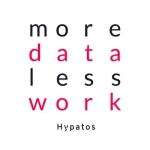I've done multiple projects. A couple of them included invoice processing. It has a machine learning package that works out of the box. For invoices. I use that. It does a very good job.
I also use document understanding, which doesn't have any training. I trained it for the extraction of data for some forms like car loan installments. It did a pretty good job.
In addition, I used it for a medical department. I use document understanding.
We wanted to have a way to do data extraction from PDF documents. It helped us automate the process. For example, if you purchase a car, the loan installment paper includes items like the vehicle number, purchase information, buyer and seller information, et cetera. It can pull that out. We can also use it similarly in the healthcare industry, to get client details.
It's great for document understanding for invoices and installments.
When it comes to document understanding for handwriting, it does a decent job sometimes with handwriting, however, some people have weird handwriting and the OCR can struggle to pick up the information. In those cases, you have to read it yourself. However, overall, it does a decent job. I haven't used it to read checkboxes or bar codes. It works well with tables, however.
There are thousands of documents that are completely, automatically processed. It can process close to a few thousand invoices per day.
I also integrated it with the Action Center for some projects; It's pretty neat.
I like the machine learning skills and the fact that they come out of the box. They are packages that you can just deploy. The training of the ML is great; there is this tool that comes with it called Data Manager. That's very handy when you are labeling data and then using it.
The AI center is excellent. AI does a pretty good job covering all the needs that are needed for automating the process for semi-structured documents. The structured documents with the form extracted, overall, are pretty good. It's doing a very impressive job. I was surprised the first time I was exposed to it. Now, I actually enjoyed doing it. It allows me to automate items that are mundane. For example, if an employee is given a task to scrape data from invoices, which are PDFs, they can get the robot to do it. Due to the fact that the documents most of the time are semi-structured, machine learning can handle the task, and machine learning is doing a pretty good job of handling that instead of the employee.
I've used Forms AI. So far, my experience has been pretty good. That said, it only works for structured documents.
In terms of the documented understanding of integrating with other systems or applications, everything is good. You can integrate it with the action center, and it does a very good job. Everything is handy and easy to use. Integration overall is good.
Human validation is not always required for the outputs. It depends on the document. For invoices, you might need human validation 5% to 10% of the time. If it processes ten documents, I would expect one document at least to need human intervention. If you are building some custom ML skills for some documents, if the document itself is scanned well and positioned well, it does a pretty good job of extracting the needed fields. If it's slightly less quality then the robot will struggle with both the OCR or extracting and digitizing data. Overall, we might need 10% to 20% human validation. The validation process itself now takes about a minute with the help of automation. It's reduced everything by a minute or two to up to five or six minutes.
Document understanding has helped us to reduce human error by at least half.
The only problem that I can see with integration is some of the features cannot be used inside the loop. At least that was the case before. I don't know if they fixed it or not. You can't put some of the activities that are de-related inside the loop. It's going to throw an error if you do.
It would be ideal if they could include more packages for more use cases.
I've used the solution for about a year.
I've contacted technical support and they have been helpful.
I'm a customer and end user. I work as a developer.
I'd rate the solution nine out of ten overall.
















